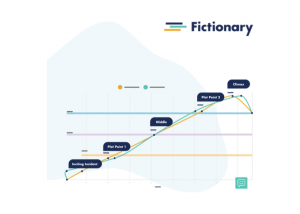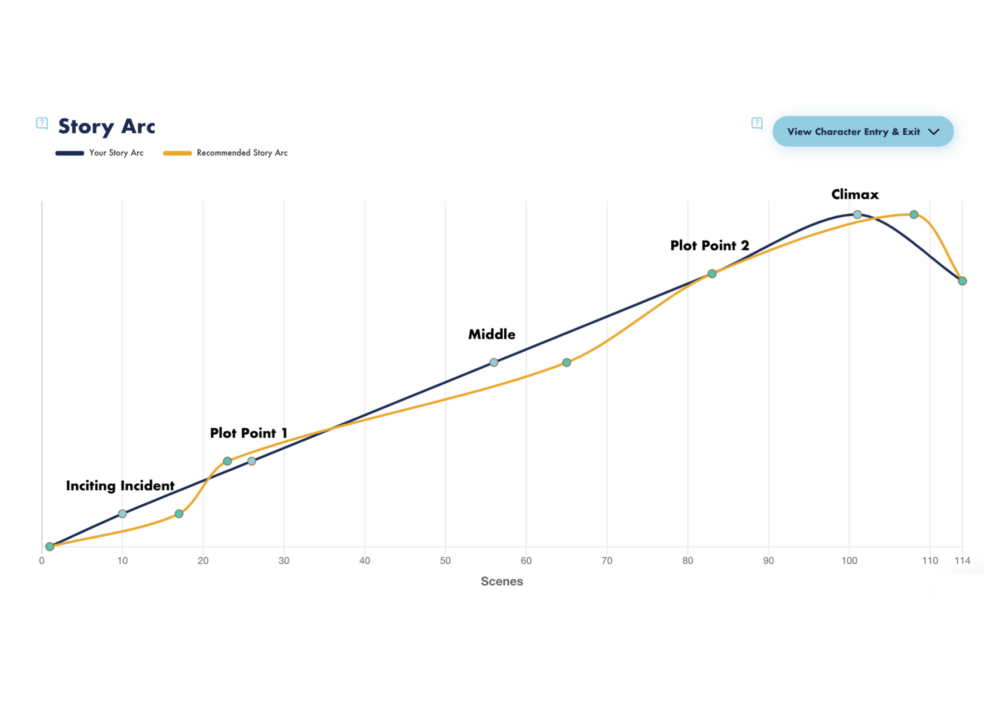
You’re heading into Act II of writing or editing your novel. So how are you going to keep readers engaged? You need a great plot point to drive them forward.
In the last post, I talked about the inciting incident in the context of a story arc. Today we’ll examine plot point 1. The story arc is made up of the Inciting Incident, Plot Point 1, the Middle and Plot Point 2, and the Climax.
Remember, you can track all this work in Fictionary’s game-changing story structure software. Take a free trial today!
Take a free trial of Fictionary today and take your story to the next level.
What Is Plot Point 1?
Plot Point 1 is the point of no return. The character can’t back out of the central conflict. This is the moment when the setup of the story ends and Act I is over.
But there’s more. There must be something at stake. If the character doesn’t care about the outcome, a reader won’t care either.
Example plot point types (there are many more):
- The character is obligated to take action.
- The character is trapped.
- Tuning back means returning to a life of unhappiness.
- The character’s desire for something overrules all else.
Famous First Plot Points
Note: there are story spoilers, so don’t read this section if you want to read the book or see the movie.
Gone Girl: Amy’s first treasure hunt clue is found. Nick has no choice but to follow it. Amy’s life is at stake (as far as the reader knows).
The Martian: Mark Watney decides he won’t die on Mars. Now he gets proactive. To back out means to die — that’s a lot at stake.
The Philosopher’s Stone: Harry Potter arrives a Hogwarts. He can’t turn back. He can’t get back on the train. That would mean life back with the Muggles and unhappiness.
Twilight: Bella learns that Edward is a vampire, but she loves him and decides to pursue him. Edward has emotional power over Bella.
![]()
Placement Of Plot Point 1
The story arc is the structure of your story and the timing of the events in that story.
The arc takes the reader from one state at the beginning to a changed state at the end.
Plot Point 1 should be somewhere around the 25% mark in your novel. If this plot point comes too late, the story will feel like it’s dragging. If it comes too early, the story may feel rushed or lacking in depth.
Here’s an example of a story arc from Fictionary. The brown line shows the recommended story arc, and the green line shows the actual story arc for the novel.

You can see above, that the inciting incident occurs too late in the story.
After that, plot point 1 is reached too quickly, denying the reader story depth. By appearing too early, it also means the middle is dragging. Act II is going on for too long.
And on it goes until the climax is too late, and there isn’t enough time for a satisfactory resolution. Meaning the reader won’t read the writer’s next book.
I’ll cover other key events such as the midpoint, plot point 2, and the climax in future blogs.
I’d love to know what you think and if you have any questions 🙂
For some fun, this is my favorite video on why stories captivate.
Next Steps: Take a free trial of Fictionary
StoryTeller is creative editing software for fiction writers. Transform your story, not just your words. Successful stories depend on your ability to edit, improve, and revise your work. Only when you master story editing, can you master storytelling.
StoryTeller draws a recommended story arc and draws the story arc for your story. You can see how to improve the structure of your story within seconds.
Why not check out Fictionary’s StoryTeller free 7-day trial and tell powerful stories?
Take a free trial of Fictionary today and take your story to the next level.


